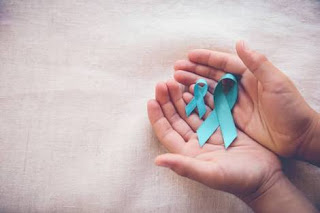Cancer starts when cells in the body begin to grow out of control. Cells in nearly any part of the body can become cancer, and can spread to other areas of the body.
</span
What is cervical cancer?
Cervical cancer is cancer that starts in the cervix, the narrow opening into the uterus (womb) from the vagina (birth canal). The cervix has two different parts and is covered with two different types of cells.
The part of the cervix closest to the body of the uterus is called the endocervix and is covered with glandular cells. The part next to the vagina is the exocervix (or ectocervix) and is covered in squamous cells. These two cell types meet at a place called the “transformation zone” (T-zone) and is the most likely location for abnormal or precancerous cells to develop.
These cells do not suddenly change into cancer. Instead, the normal cells of the cervix first gradually develop pre-cancerous changes that turn into cancer.
Cervical cancer is the second most common type of cancer for women worldwide, Cervical cancer used to be the leading cancer death for American women, but it’s now considered the easiest female cancer to prevent. Regular Pap tests, HPV vaccines, and HPV testing have made it easier to prevent cervical cancer.
Cancer of the cervix tends to occur during midlife. Half of the women diagnosed with the disease are between 35 and 55 years of age. It rarely affects women under age 20, and approximately 20 percent of diagnoses are made in women older than 65. Every year in the UK, over 3,000 women will be diagnosed with cervical cancer and 300,000 women will suffer cervical abnormalities.
Symptoms associated with cervical cancer
Cervical cancer doesn’t usually cause symptoms until it’s in advanced stages. Also, women may think the symptoms are related to something else, such as their menstrual cycle, a yeast infection, or a urinary tract infection.
Symptoms associated with cervical cancer include:
Abnormal bleeding , such as bleeding between menstrual periods, after sex, after a pelvic exam, or after menopause, discharge that’s unusual in amount, color, consistency, or smell having to go to urinate more frequently pelvic pain painful urination
While bleeding and discharge may be early signs of cervical cancer, more severe symptoms will develop in later stages. Symptoms of advanced cervical cancer can include, back or pelvic pain, difficulty in urinating or defecation, swelling of one or both legs, fatigue, weight loss.
Cervical cancer risk factors
Human papilloma virus (HPV) infection
Infection by the human papilloma virus (HPV) is the most important risk factor for cervical cancer. HPV is a group of more than 150 related viruses. Some of them cause a type of growth called papillomas, which are more commonly known as warts.
HPV can infect cells on the surface of the skin, and those lining the genitals, anus, mouth and throat, but not the blood or internal organs such as the heart or lungs. HPV can spread from one person to another during skin-to-skin contact. One way HPV spreads is through sex, including vaginal, anal, and even oral sex.
Certain types of HPV may cause warts on or around the female and male genital organs and in the anal area. These are called low-risk types of HPV because they are seldom linked to cancer.
Other types of HPV are called high-risk types because they are strongly linked to cancers, including cancer of the cervix, vulva, and vagina in women, penile cancer in men, and cancers of the anus, mouth, and throat in both men and women.
Doctors believe that a woman must be infected with HPV in order to develop cervical cancer. Although this can mean infection with any of the high-risk types, about two-thirds of all cervical cancers are caused by HPV 16 and 18.
Infection with HPV is common, and in most people the body can clear the infection by itself. Sometimes, however, the infection does not go away and becomes chronic. Chronic infection, especially when it is caused by certain high-risk HPV types, can eventually cause certain cancers, such as cervical cancer.
Smoking
When someone smokes, they and those around them are exposed to many cancer-causing chemicals that affect organs other than the lungs. Women who smoke are about twice as likely as non-smokers to get cervical cancer. Tobacco by-products have been found in the cervical mucus of women who smoke. Read more
Researchers believe that these substances damage the DNA of cervix cells and may contribute to the development of cervical cancer.
Having a weakened immune system
Human immunodeficiency virus (HIV), the virus that causes AIDS, damages a woman’s immune system and puts them at higher risk for HPV infections. This might explain why women with AIDS have a higher risk for cervical cancer.
The immune system is important in destroying cancer cells and slowing their growth and spread. In women with HIV, a cervical pre-cancer might develop into an invasive cancer faster than it normally would.
Another group of women at risk for cervical cancer are those taking drugs to suppress their immune response, such as those being treated for an autoimmune disease (in which the immune system sees the body’s own tissues as foreign and attacks them, as it would a germ) or those who have had an organ transplant.
Chlamydia infection
Chlamydia is a relatively common kind of bacteria that can infect the reproductive system. It is spread by sexual contact. Chlamydia infection can cause pelvic inflammation, leading to infertility.
Some studies have seen a higher risk of cervical cancer in women whose blood tests and cervical mucus showed evidence of past or current chlamydia infection. Women who are infected with chlamydia often have no symptoms. In fact, they may not know that they are infected at all unless they are tested for chlamydia during a pelvic exam.
Overweight
Overweight women are more likely to develop adenocarcinoma of the cervix.
Long term use of oral contraceptive (birth control pills)
There is evidence that taking oral contraceptives (OCs) for a long time increases the risk of cancer of the cervix. Research suggests that the risk of cervical cancer goes up the longer a woman takes OCs, but the risk goes back down again after the OCs are stopped, and returns to normal about 10 years after stopping.
The American Cancer Society believes that a woman and her doctor should discuss whether the benefits of using OCs outweigh the potential risks.
Intrauterine device (IUD) use
Some research suggests that women who had ever used an intrauterine device (IUD) had a lower risk of cervical cancer. The effect on risk was seen even in women who had an IUD for less than a year, and the protective effect remained after the IUDs were removed.
Having multiple full-term pregnancies
Women who have had 3 or more full-term pregnancies have an increased risk of developing cervical cancer. No one really knows why this is true. One theory is that these women had to have had unprotected intercourse to get pregnant, so they may have had more exposure to HPV. Also, studies have pointed to hormonal changes during pregnancy as possibly making women more susceptible to HPV infection or cancer growth. Another thought is that pregnant women might have weaker immune systems, allowing for HPV infection and cancer growth.
Younger than 17 at your first full-term pregnancy:
Women who were younger than 17 years when they had their first full-term pregnancy are almost 2 times more likely to get cervical cancer later in life than women who waited to get pregnant until they were 25 years or older.
Poverty
Many low-income women do not have easy access to adequate health care services, including Pap tests. This means they may not get screened or treated for cervical pre-cancers.
Dieethylstilbestrol (DES) DES is a hormonal drug that was given to some women between 1940 and 1971 to prevent miscarriage.DES-related clear cell adenocarcinoma is more common in the vagina than the cervix. The risk appears to be greatest in women whose mothers took the drug during their first 16 weeks of pregnancy. The average age of women diagnosed with DES-related clear-cell adenocarcinoma is 19 years.These types of cancer are extremely rare in women who haven’t been exposed to DES. There is about 1 case of vaginal or cervical clear-cell adenocarcinoma in every 1,000 women whose mothers took DES during pregnancy. This means that about 99.9% of “DES daughters” do not develop these cancers.
Cervical cancer may run in some families. If your mother or sister had cervical cancer, your chances of developing the disease are 2 to 3 times higher than if no one in the family had it. Some researchers suspect that some instances of this familial tendency are caused by an inherited condition that makes some women less able to fight off HPV infection than others.
How to lessen your risk of cervical cancer
You can lessen your cervical cancer risk by reducing the likelihood you’ll get HPV.
If you’re between the ages of 9 and 26, you can get the HPV vaccine, they all protect against types 16 and 18, which are the two most cancer-causing types. Some vaccines provide immunity against even more HPV types. It’s ideal to get this vaccine before becoming sexually active.
Also, a woman with multiple sexual partners should use condoms to lower her risk of sexually transmitted illnesses no matter what other form of contraception she uses.
Get routine pap tests: Talk to your doctor about the recommended frequency of Pap tests based on your age and medical conditions. Practice safe sex, have your partner wear a condom each time you have sex. Avoid smoking, women who smoke are at greater risk for cervical cancers.
All women should have cervical screen according to national guidelines. Also, if you experience these symptoms, talk to your doctor about screening for cervical cancer.





Leave a Reply